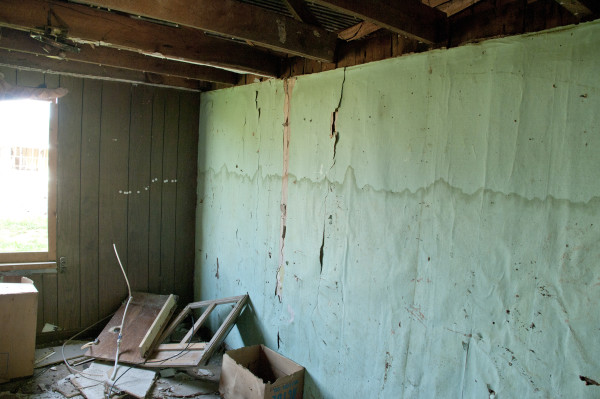Water damage can result from a number of causes, be they degrading building or joining materials, structural damage, or simply an overabundance of standing or flowing water from some other event like severe weather or flood.
This may occur quickly or over an extended duration, but in either case the costs of repair can seem high until you realize that a small issue of damage will only turn into a larger, potentially even catastrophic problem if it is not remedied immediately.

Signs of Water Damage
Water damage can be tricky to spot — in many cases the troubled area is problematic because it is not readily seen or accessed. That said, water damage tends to spread out from its source, moving either with gravity or seeping into other materials, so early detection is key.
In addition to obvious signs like dampness or visible water, more subtle signs like peeling and discoloration, odd odors or sounds, or even the common development of health issues in a building can be signs that water damage is present.
Evaluating Water Damage
The damage, itself, is evaluated based on the source of the water and an estimation of the rate at which it can be evaporated and dried. These factors are critical as water can be as destructive as it is a human necessity — and since a certain amount of damage will be done by the time it’s spotted, determining what can be saved and what is already lost is the first step to fixing the problem and preventing further losses.
With damage from “gray water” or “black water” sources, it is ally assumed that there is some level of contaminant already present and this will change how the affected area must be handled. Further care must be given to this element, as “clean water” will, over time, turn into “gray water” or “black water.”
The class of damage is determined by the materials affected and the size and exposure of the damaged area, as these are the factors that determine the rate at which the water will evaporate and dry out. Depending on the materials, how they absorb and hold liquids, this may be more than a situation of more or less time. Special methods may be required to suit the situation.
Consequences of Water Damage
Frequently, some damage or structural weakness can be attributed as a cause but the true threat of water damage comes from its propensity to cause continued damage, weakening or ruining nearly anything it touches. Sufficient damage from above can weaken walls and supports, damage that weakens a foundation can be crippling.
Additionally, no matter how clean the source water may have been, the environment that’s created once any amount of seepage has occurred is perfect for the development of molds and mildew, which can spread independently and can cause or contribute to various health issues.
The repair of this damage may be costly, but the true cost comes from not seeing to it promptly. Steps can be taken to waterproof nearly anything that sees exposure to water, and this can help prevent damage from occurring in the first place, but due to the expensive and potentially crippling nature of water damage, it is important to have it inspected and repaired as soon as it is discovered. Some businesses, like Raleigh Waterproofing Inc can assist you in either capacity, as the skills to repair go hand-in-hand with prevention.
Evan Maukonen is a freelance writer and professional student who enjoys sharing the benefits of his experience through articles and editorials. For further information about water damage, visit http://en.wikipedia.org/wiki/Water_damage_restoration.
